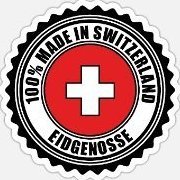Thai Punctuation
-
Recently Browsing 0 members
- No registered users viewing this page.
-
Topics
-
-
Popular Contributors
-
-
Latest posts...
-
3
-
7,363
-
76
-
27
-
3
Have you forgotten already 🤷♂️?!
Only the last one is attractive to me. Delicacies?? 🙀 -
38
Crime Ex-Abbot Vanishes Amid 28 Million Baht Embezzlement Scandal
I acknowledge your perspective. However, it must be recognized that this applies equally to Christians, Muslims, Jews, and all other faiths. We are born human, but upon joining any religion, carefree living often ends—no alcohol, no intimacy. Yet beneath the sacred garments of these devotees lies ordinary human flesh, with its own wants, cravings, and aspirations. The world is a magnificent place, yet humanity continues to degrade it. At times, it feels as though we are born into hell, with salvation awaiting us later.
-
-
Popular in The Pub









Recommended Posts
Create an account or sign in to comment
You need to be a member in order to leave a comment
Create an account
Sign up for a new account in our community. It's easy!
Register a new accountSign in
Already have an account? Sign in here.
Sign In Now